Have you ever gone hiking and seen some tiny red berries poking out of the ground? You may just have discovered some wonderful alpine strawberries. Alpine strawberries are very similar to the strawberries you find in stores commercially, but they are much smaller. They don’t have runners, and you won’t see fruit much larger than a fingernail. There could be only a few dangling together, giving you a unique opportunity to grab a small number of fruits for a midday snack.
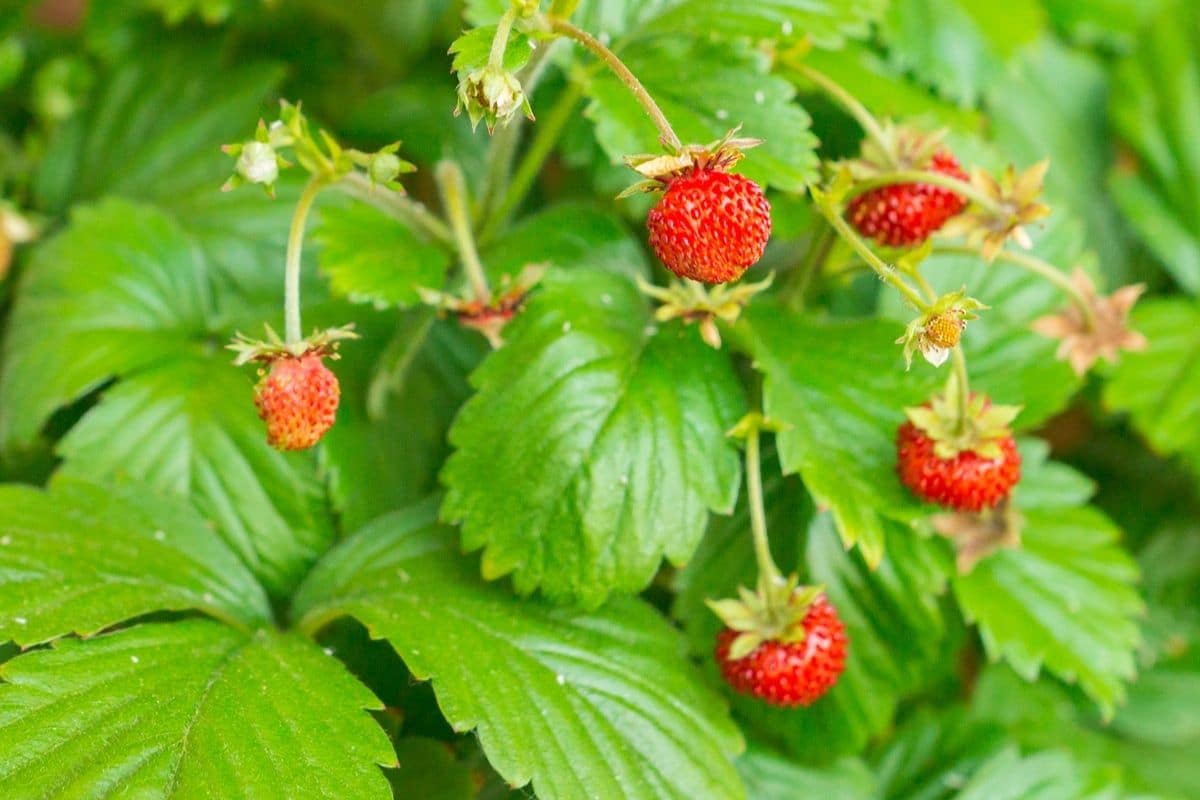
The alpine strawberry is actually a member of the rose family. It is related to the wood strawberry, which is found in France. It is not the same as the mock strawberry, though, which looks similar (and is something to look out for).
Jump to:
Where Can You Find Alpine Strawberries?
You can find alpine strawberries all over the planet. There are forms of the alpine strawberry in Europe, South America, northern Asia, North America, and Africa. The common alpine strawberry was discovered in the Alps, which is where it got its name.
Get seeds or plants from Amazon.
[amazon bestseller=”alpine strawberry plants” items=”4″ grid=”2″]
When Can You Expect to Find Alpine Strawberries?
Alpine strawberries are amazing because they grow throughout the months of June to October. That means that it’s much easier to find this fruit throughout the year, usually in spring, summer and fall. If an area has a longer growing season, then you may find strawberries beyond those months.
If you would like to forage for wild strawberries, then look for them in old orchards or near wild black cherry trees. You may find them around grape ferns and in abandoned fields. If you are looking for a place to start, you can begin browsing near the edges of woods and forests, where they’re more likely to be prominent.
Foraging along walking paths, you should be able to find alpine strawberries pretty quickly. They grow best in partial sunlight and will be happier in shallow soils or rocky areas. If the area doesn’t have a lot of grass, the alpine strawberry may still be able to grow thanks to its shallow root system.
Overall, a few good places to look include:
- Higher elevations
- Clearings in forests or woods
- Along pathways
- Wooded locations
- Fields
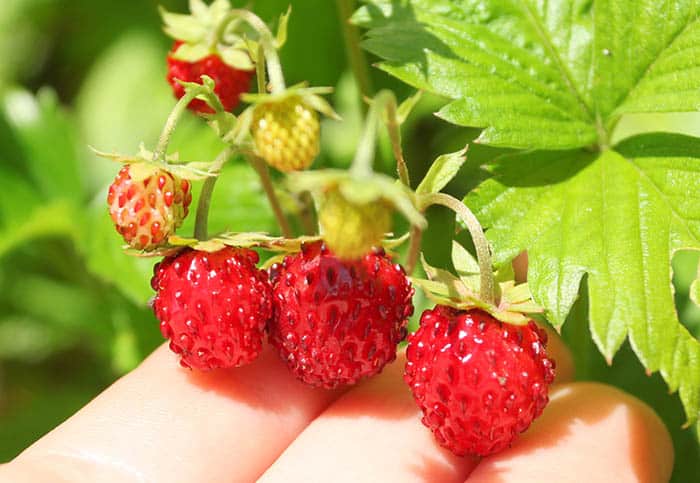
Can You Plant Alpine Strawberries?
Of course! They grow best in USDA zones 3 to 10 in the United States. You can buy them in multiple colors, usually cream, yellow or red. If you would like to have a variety of strawberries with a real flavorful punch, then plant these early in the season. They’ll grow by spring and continue to produce through the fall. You can use the fruit in the same ways that you’d use any strawberries, whether that’s to make pies or smoothies or to eat them straight off the vine.
If you want to plant them, you’ll need to place the plants around 12 inches apart in rows. The rows should also be approximately 12 inches apart. Initially, the soil should be heavily fertilized and damp, but once they start to grow, they may not need much maintenance at all. They are great for suppressing weeds in gardens, so if you had a weed problem last growing season, consider placing some alpine strawberries down to fend off the garden from invaders.
When you harvest, don’t expect to get much. You may gather around a handful at a time. That’s not much, but they are perfect for smaller uses, like a topping for ice cream or for a small pie filling.
Learn more about growing alpine (wild) strawberries.
Are Alpine Strawberries Poisonous?
Alpine strawberries are not poisonous! In fact, they have a bold, sweet, aromatic flavor that might surprise you. Since they’re small, they have a lot of flavor in their fruit, which is perfect for a snack.
One thing you do have to watch out for, though, is the false strawberry. The so-called false wood strawberry or Indian strawberry is not necessarily dangerous, but it shouldn’t be considered safe to eat. The mock strawberry has yellow flowers and similar leaves to the alpine strawberry. However, the alpine strawberry has a white flower.
You can also identify false strawberries by their scent. A false strawberry will not smell if you crush it. If you crush a wild strawberry, it will have a strong strawberry scent.
Additionally, wild strawberries have fruit that dangles. If the fruit points up directly, then you’re probably looking at a false strawberry. The biggest issue between the two is that the false strawberry lacks flavor.
You should know that the false strawberry is considered to be a weed. The fruit is dry and lacks flavor, so it’s unlikely that you or your pets will enjoy eating them.
Most interestingly, the leaves of the false strawberry can be used effectively. The leaves are good in teas, and they have been used for centuries as a medicinal herb. They contain iron, vitamin C, protein, and other beneficial vitamins. The false strawberry leaves are known to help with burns, boils, snake bites, weeping eczema, and other issues.
Enjoy Alpine Strawberries
Alpine strawberries are interesting because they’re such a unique form of the plant. They’re an amazing find if you’re out foraging, and they’re fairly easy to grow as an ornamental plant or protector against weeds in your own garden.
It’s safe to say that Alpine strawberries are on the list of great wild finds. What do you think about them? Where have you seen them growing lately? Do you have any recipes you use them in? Comment below and let me know!

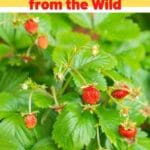
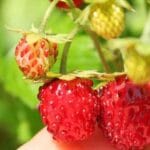



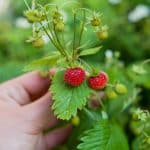

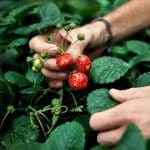
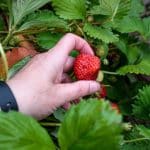
Leave a Reply